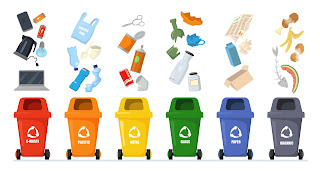The Rising Crisis of Clothing Landfills and How SwagCycle Offers a Solution
The Hidden Cost of Fast Fashion: Clothing Landfills
The fashion industry has undergone a rapid transformation over the last few decades. As trends change faster than ever and clothing prices become more affordable, the dark side of this growth is showing—an explosion of textile waste. According to estimates, the average person discards 81 pounds of clothing every year. Much of this waste ends up in clothing landfills, where synthetic fabrics can take centuries to decompose. The result? Massive piles of clothes polluting our planet, emitting harmful gases, and contributing to climate change.
Despite sustainable fashion gaining attention, the majority of clothing brands still rely on traditional production and disposal methods. Without intervention, experts predict that global textile waste will rise significantly by 2030.
What Makes Clothing Landfills Such a Problem?
- Non-Biodegradable Materials: Fabrics like polyester and nylon don’t break down naturally. In landfills, they sit for hundreds of years, releasing methane and toxic chemicals into the soil and air.
- Sheer Scale: Around 92 million tons of textile waste are generated globally every year. Many of these items are discarded before they reach the end of their lifespan.
- Resource Wastage: The production of clothing uses massive amounts of water, energy, and raw materials. When clothes are dumped in landfills, these resources are effectively wasted.
SwagCycle: A Better Way to Handle Textile Waste
At SwagCycle, we believe there’s a better way to deal with old and unwanted clothing. Rather than contributing to the problem of clothing landfills, SwagCycle offers a smart, sustainable solution that benefits both businesses and the environment.
What We Do:
SwagCycle partners with businesses to tackle textile waste head-on. Companies often produce branded swag—think t-shirts, hats, and other merchandise—that eventually becomes outdated or unused. Traditionally, these items end up in clothing landfills, but SwagCycle reimagines their future. By offering recycling, upcycling, and responsible disposal options, SwagCycle gives brands the opportunity to reduce waste and embrace sustainability.
The Benefits:
- Environmental Impact: By diverting clothing from landfills, SwagCycle helps cut greenhouse gas emissions and soil pollution.
- Brand Responsibility: Businesses working with SwagCycle showcase a commitment to environmental stewardship, appealing to eco-conscious customers.
- Circular Economy: SwagCycle transforms discarded textiles into valuable resources, helping reduce the need for virgin materials.
Why Businesses Should Care About Textile Waste
Today’s consumers are increasingly aware of environmental issues, including clothing landfills. A brand’s commitment to sustainability is no longer optional—it’s expected. Partnering with a solution like SwagCycle doesn’t just protect the environment; it builds trust with customers and supports long-term brand loyalty.
Final Thoughts
The problem of clothing landfills may seem overwhelming, but businesses can be part of the solution. SwagCycle provides a streamlined, eco-friendly way to reduce textile waste and contribute to a healthier planet. By working together, we can rewrite the future of fashion waste—one piece of clothing at a time.



Comments
Post a Comment